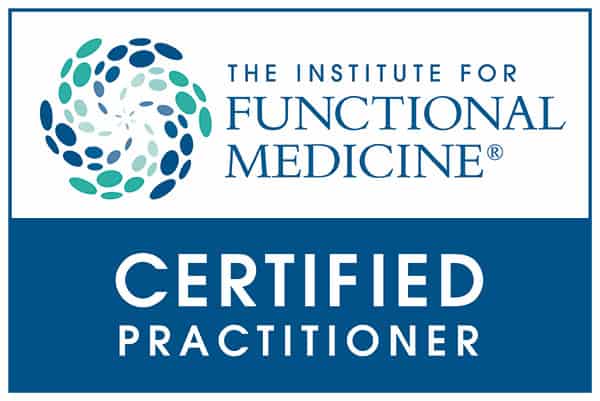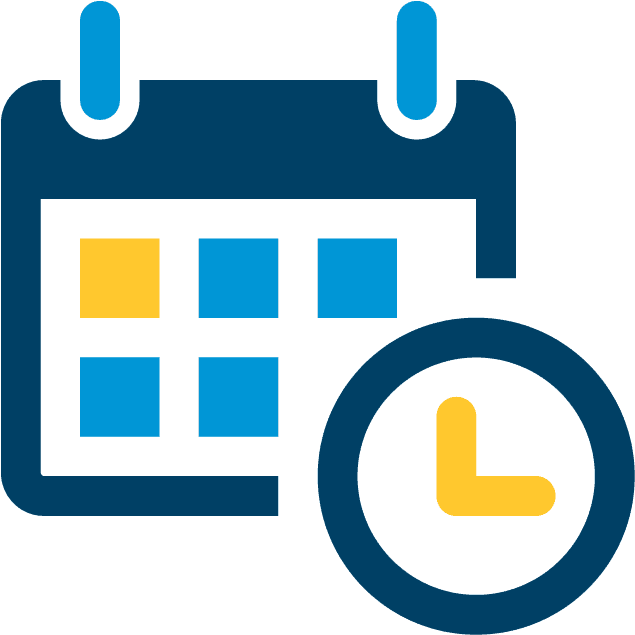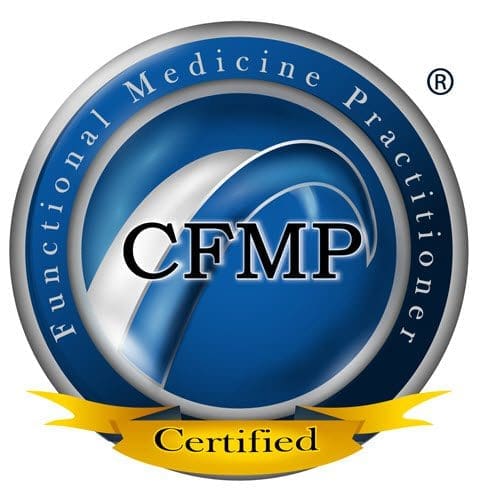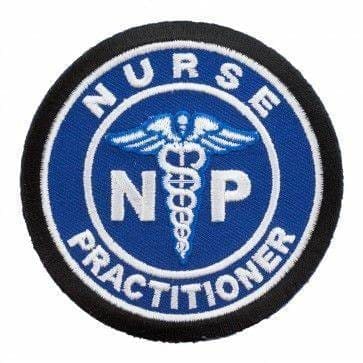
by Dr Alex Jimenez DC, APRN, FNP-BC, CFMP, IFMCP | El Paso HS Sports (Local) RSS
The basketball season ended for Burges point guard Natalie Sanchez, but her senior year as a Mustang player will not be done until she reaches the NCAA Final Four in Phoenix this weekend.
Sanchez won the #Dreamfearlessly Fan Vote competition, an online voting contest that guaranteed her a spot to compete at the American Family Insurance High School Slam Dunk and 3-Point Championships this weekend.
She beat Bethany Wolph, from Valley Christian in Arizona, with a 56 percent vote in the final bracket.
“I was actually coming back from spring break when my mom sent out a message that I had won,” Sanchez said. “I felt good. I am a little nervous for what’s coming up, but it feels good to represent El Paso.”
Sanchez is thankful to the Burges community and especially her family for voting for her during the competition.
“They constantly texted me reminding me to vote, so I would go vote and check,” Sanchez said.
The senior will compete against five other competitors in the nationally televised event, which will air on CBS during the Final Four weekend on April 2.
“I am looking forward to competing against other great shooters. It’s going to be a great experience,” Sanchez said. “I’ve been practicing since last Thursday. Just trying to find my shot since my last game.”
Coach Cynthia Hernandez has been working with Sanchez, setting up basketball racks to practice for the competition. She is excited to cheer her on from the stands.
“I’m going to be there so I get to see her compete in person,” Sanchez said. “It’s awesome. It’s a great opportunity for her and for Burges. It’s a good way to promote to our students, school and EPISD.”
To view Natalie’s video log on to www.highschoolslam.com and click on the Women’s 3-Point tab.

by Dr Alex Jimenez DC, APRN, FNP-BC, CFMP, IFMCP | UTEP (Local) RSS
The UTEP women’s tennis team dropped a hard-fought match to Iowa State on Friday at the El Paso Tennis and Swim Club. The Cyclones, who have now won 12 straight, took the 4-0 victory.
The short-handed Miners had a strong showing in doubles play. The highlight of the day came from sophomore Raven Bennett and senior Daphne Visscher, who turned in a dominating 6-1 victory over the Cyclones’ Margarita Timakova and Annabella Bonadonna on court two. The decisive match for the doubles point came on court one, with Milou Pietersz and Lois Wagenvoort going toe-to-toe with Iowa State’s Samantha Budai and Maty Cancini. The Miner duo had a 5-4 lead late but could not hold on, falling to the Cyclones 7-5.
Only four singles matches were played, and because of forfeits on courts five and six, the Cyclones took the match 4-0. The Miners were playing without the injured Maria Paula Medina and Duda Santos.
The Miners will be back in action Friday, March 24, when they travel to Albuquerque, N.M. to meet with New Mexico. First serve against the Lobos is 11 a.m. MT.
Iowa State 4, UTEP 0
Singles competition
1. Milou Pietersz (UTEP) vs. Budai, Samantha (ISU) 3-6, 4-3, unfinished
2. Cancini, Maty (ISU) def. Daphne Visscher (UTEP) 6-3, 6-1
3. Lois Wagenvoort (UTEP) vs. Espindola, Regina (ISU) 3-6, 5-2, unfinished
4. Raven Bennett (UTEP) vs. Freeman, Erin (ISU) 7-5, 3-2, unfinished
5. Bonadonna, Annabella (ISU) def. No player (UTEP), by forfeit
6. Timakova, Margarita (ISU) def. No player (UTEP), by forfeit
Doubles competition
1. Budai, Samantha/Cancini, Maty (ISU) def. Milou Pietersz/Lois Wagenvoort (UTEP) 7-5
2. Raven Bennett/Daphne Visscher (UTEP) def. Timakova, Margarita/Bonadonna, Annabella (ISU) 6-1
3. Alvarez, Karen/Freeman, Erin (ISU) def. No player/No player (UTEP), by forfeit

by Dr Alex Jimenez DC, APRN, FNP-BC, CFMP, IFMCP | UTEP (Local) RSS
Tables are now on sale for the 43rd edition of “Dinner With the Miners,” the annual awards banquet for UTEP Athletics. This year’s event, sponsored by the El Paso Downtown Lions Club, will be held on Thursday, April 27 at the Wyndham El Paso Airport.
Coaches and student-athletes will be in attendance for each of UTEP’s 16 Division I sports, with Most Valuable Athlete awards being presented.
UTEP’s Male and Female Athlete of the Year will also be announced as well as the recipient of the Golden Miner Award, presented to UTEP’s top all-around student-athlete based on athletics, academics and community service.
The social hour begins at 5 p.m., with dinner and the program to follow at 6:15 p.m.
Prices are $275 for three seats at a shared table with two student-athletes/coaches, and $500 for six seats at a shared table with four student-athletes/coaches. Funds raised are allocated to the UTEP student-athlete scholarship fund.
For more information or to purchase tickets, please call Jim Peak at (915) 581-0490.

by Dr Alex Jimenez DC, APRN, FNP-BC, CFMP, IFMCP | UTEP (Local) RSS
The UTEP men’s golf team will make a trip to the Alamo City to compete in the Lone Star Invitational, hosted by UTSA at the Briggs Ranch Golf Club (par 72/7,247 yards) in San Antonio, Texas.
The invitational will run from March 20-21 with an 8:30 a.m. (9:30 a.m. MT) shotgun start both days (36 holesMonday, 18 holes Tuesday).
Coming off a ninth place finish last week at the Border Olympics, UTEP will send Frederik Dreier, Aaron Terrazas, Nicklas Pihl, Andreas Sorensen, Charles Corner, and Prescott Mann, who will be playing as an individual, to the links.
The Miners, who placed fourth in last year’s Lone Star Invitational with 32-over par 896 (305-298-293), will compete in a field that includes 2016 Lone Star champ New Mexico, Bowling Green, Cincinnati, Illinois, Little Rock, Louisiana-Lafayette, McNeese State, Mississippi State, New Mexico State, Oklahoma, Rice, Southeastern Louisiana, Texas State, and UTSA.
2017 Lone Star Invitational
Monday, March 20 — Tuesday, March 21
Briggs Ranch Golf Club (7,247 yards/par 72), San Antonio, Texas
Monday, March 20
8:30 a.m. — First & Second Rounds
(shotgun start)Tuesday, March 21
8:30 a.m. — Final Round
(shotgun start)
Field:
Bowling Green, Cincinnati, Illinois, Little Rock, Louisiana-Lafayette, McNeese State, Mississippi State, New Mexico, New Mexico State, Oklahoma, Rice, Southeastern Louisiana, Texas State, UTEP, UTSA.

by Dr Alex Jimenez DC, APRN, FNP-BC, CFMP, IFMCP | UTEP (Local) RSS
Kaitlin Ryder connected on a three-run home run and El Paso native Erika Harrawood earned a victory as UTEP defeated Middle Tennessee 7-6, in the first game of Saturday’s doubleheader at the Helen of Troy Softball Complex.
Ryder tallied two more RBI in game two but the Blue Raiders (10-12, 1-4 Conference USA) held on to win their first ever game in El Paso, 5-2, over the Miners (6-19, 1-4 C-USA).
“[Middle Tennessee] is a scrappy team and much improved,” fourth-year head coach Tobin Echo-Hawk said. “They kept fighting and did a better job, especially in the second game.”
The series finale is Sunday at noon. Fan can get in free with canned food for Home Run for the Hungry.
UTEP 7, Middle Tennessee 6
Harrawood (2-7) won her first ever game in her hometown, hurling 6.1 frames with five runs (four earned) while striking out four and walking none.
“She did a great job,” Echo-Hawk said about Harrawood’s performance. “She got some really big outs for us. Even in the that first inning there were runners on and she did a nice job of getting herself out of those tough situations. She did it multiple times throughout the game. It was just a great and solid performance. She didn’t give up too many big hits with runners in scoring position.”
The UTEP offense gave Harrawood a comfortable 7-0 lead before Middle Tennessee made a bid for a comeback.
Hope Moreno put the Miners on the board in first inning on a groundout to second base. Moreno still recorded an RBI as Lindsey Sokoloski crossed the dish for an early 1-0 advantage. Sokoloski reached on an error and advanced to second. She would eventually find herself at third after Kiki Pepi singled.
It was in the second inning Ryder blew the game open with her second dinger of the season. The junior drove a 1-2 pitch over left that put her squad up 4-0.
In the fourth, Courtney Clayton singled in Taylor Sargent, who had led off the inning with a single to left. Pepi then used a first-pitch double up the middle, scoring Clayton and Ariel Blair for a 7-0 lead.
Middle Tennessee scored two runs in the sixth behind a RBI each from Morgan Harris and Dani Munoz. Things got interesting in the seventh when the Blue Raiders crossed the dish four more times, but Devyn Cretz notched her first career save by forcing a groundout by Kaylyn Slatter with one runner on to end the ball game.
Pepi finished 2-for-3 with two RBI (19 RBI in 2017). Sargent produced her first multi-hit game (2-for-3) since March 5 and Pamala Baber finished with a 2-for-3 outing and a run scored. Ryder produced a season-high three RBI and six putouts from behind the plate. Ryder made her first start at catcher since Feb. 26 against Utah State.
Harrawood, at one point in the ball game, retired 10 consecutive batters that started in the second inning. The Blue Raiders went down in order the next three innings before Precious Birdsong led off the sixth inning with a single.
UTEP 2, Middle Tennessee 5
The Blue Raiders took an early 2-0 lead in the second frame off a RBI each from Kristin Uselton and Keely McGee.
The fighting Miners answered with a pair of runs of their own off Ryder’s bat in the third inning. Cortney Smith led off with a single while Blair used an infield single to reach first. Ryder came in to pinch hit for Sokoloski and came up with a two-run single to left on a 1-0 pitch that plated Smith and Blair.
After two scoreless innings, Munoz doubled off the wall with one out in the sixth. Lexi Cushing came in as a pinch hitter and singled in Munoz for a 3-2 edge. After Kirstyn Cuccia popped out to second, Uselton came up with a big two-run home run over left. Baber, who made the start at left, almost came up with the steal above the fence, but she couldn’t hold on to the ball in the valiant effort.
“It was in her glove,” Echo-Hawk said. “It’s like I told [the team], sometimes when things are not going your way, everything doesn’t go your way. She had a glove on it and almost made a great play.”
The Miners looked to rally as Clayton, with two outs, doubled to left. Ryder then followed with a single that advanced Clayton to third. But Pepi flied out to center to end the contest.
Clayton tallied another multi-hit game, going 2-for-3. It was her ninth multi-hit game of the season and no. 51 for her career. Ryder produced two more hits, while Smith finished 2-for-3.
The pitching staff as a unit on Saturday, only walked two batters and struck out seven Blue Raiders. Cretz (4-5), the game two starter, struck out three in a complete game effort.
“[The pitching staff] is getting much better and much improved,” Echo-Hawk said. “We just need to play better defense behind the pitchers. Sometimes we get on our heels on defense and should have more of an attack kind of mentality.”
UTEP, however, did turn another double play in game two. It’s the tenth double play turned in 2017.

by Dr Alex Jimenez DC, APRN, FNP-BC, CFMP, IFMCP | UTEP (Local) RSS
Middle Tennessee scored five runs right off the bat to take a 5-0 lead in the first inning, but UTEP racked up 10 unanswered runs to hold on for a 10-7 series clinching victory on Sunday at the Helen of Troy Softball Complex.
The Miners (7-19, 2-4 Conference USA) and Blue Raiders (10-13, 1-5 C-USA) combined for 17 runs and 25 hits, the most during a single conference contest this season.
UTEP tied its season high in runs (10) and hits (13), while Devyn Cretz (5-5) picked up the victory and senior El Paso native Kaitlin Fifield notched her second save of the season to clinch the series triumph.
“It’s huge [to win the weekend series],” fourth-year head coach Tobin Echo-Hawk said. “Sometimes when you start off slow and you’re facing tough opponents, your record doesn’t show your progress. It’s big – especially at home – to get two of the three wins. It’s also a big confidence booster going into the rest of conference play.”
The Miners found themselves down five runs early and didn’t let the deficit affect them. In the bottom first with one out, freshman Pamala Baber – who’s had a hot bat the last few weeks – doubled in Kaitlin Ryder and Kiki Pepi. Ryder walked while Pepi singled to right field during the inning.
With the score 5-2, Taylor Sargent and Mallorie Cross used back-to-back singles to right, while Ariel Blair reached on an error to load the bases. The Miners would move the line to tie the game 5-5 after Courtney Clayton and Ryder came up with back-to-back RBI singles and Pepi drove in a run on a fielder’s choice.
The Orange and Blue took the go-ahead lead in the third inning. Cortney Smith led off the frame with a single to left. Sargent then attempted a sac-bunt, but reached first safely on the fielder’s choice as Smith was called safe at second. Cross advanced the runners to second and third on a sac-bunt to set up Macey Brown in a pinch-hit situation.
The freshman came up with a RBI single to left that scored Smith and Clayton gave the Miners a 7-5 advantage after a sac-fly to left that plated Sargent. Brown is 2-for-2 with three RBI in her last two pinch-hit at bats.
The Miners crossed the dish a trio of times in the fourth inning led by Smith’s two-run single up the middle and a Cross RBI single down the left line that scored pinch runner Brianna Red for a UTEP, 10-5, lead.
In the fifth, Fifield replaced Cretz in the circle after bases became loaded off back-to-back hits and a walked batter with one out. Fifield held the Blue Raiders’ bats in check after two runs scored on a single and a walked batter with bases loaded. She forced Precious Birdsong to pop out to the shortstop Smith, while the runner at first was thrown out at second on a fielder’s choice to end the rally.
In the seventh, Lexi Cushing led off with a hard single to right center. But the defense came up with a huge 4-6-3 double play that Kirstyn Cuccia hit into. Kristin Uselton, who homered on Saturday night, grounded out to third base to end the contest.
“After the fifth when [Middle Tennessee] came back and scored the two runs, it could’ve gone the same way as it did yesterday, but there was a different feel today,” Echo-Hawk said. “It was more of a feeling that we are going to win today, as opposed to being on our heels and holding our breath to see what happens. I think it started in the circle. Kaitlin did a great job and was super confident getting us some ground balls for that double play. After that double play, we knew no one else was going to get on base.”
Pepi (2-4), Baber (2-4), Smith (2-4) and Cross (2-2) each tallied multiple hits, while Clayton, Baber and Smith each recorded a pair of RBI. Sargent scored two runs and Blair stole her first bag of the season. Cretz threw 4.0 frames, striking out a pair of batters and Fifield threw 2.2 solid innings, allowing two hits.
“It’s not how you start the season, it’s how you finish the season,” Echo-Hawk said. “And as long as we progress throughout the course of the season, we’re going to be okay. I think everyone on the outside looking in thinks things are going bad. But we’re hitting our stride and getting better every single day.”
Last season, UTEP was 9-18 heading into a league series against LA Tech in El Paso. The Miners won the series, while eventually advancing to the C-USA Tournament.
Up Next
UTEP will continue its home slate as Southern Miss make its way to the Sun City for a three-game seriesMarch 25-26. Saturday’s contests will start at 3 p.m., while Sunday’s game is a 11 a.m. start. The Miners will then host rival NM State in a doubleheader on March 28.
Photos by Andres Acosta, El Paso Herald-Post Chief Photographer
UTEP’s Hope Moreno (#27) CUSA match up between Middle Tennessee Vs UTEP, Helen of Troy Complex, El Paso Texas
CUSA match up between Middle Tennessee Vs UTEP, Helen of Troy Complex, El Paso Texas
UTEP’s starting pitcher Erika Harrawood (#23) CUSA match up between Middle Tennessee Vs UTEP, Helen of Troy Complex, El Paso Texas
CUSA match up between Middle Tennessee Vs UTEP, Helen of Troy Complex, El Paso Texas
CUSA match up between Middle Tennessee Vs UTEP, Helen of Troy Complex, El Paso Texas
CUSA match up between Middle Tennessee Vs UTEP, Helen of Troy Complex, El Paso Texas
CUSA match up between Middle Tennessee Vs UTEP, Helen of Troy Complex, El Paso Texas
CUSA match up between Middle Tennessee Vs UTEP, Helen of Troy Complex, El Paso Texas
CUSA match up between Middle Tennessee Vs UTEP, Helen of Troy Complex, El Paso Texas
UTEP’s Kaitlin Ryder (#6) CUSA match up between Middle Tennessee Vs UTEP, Helen of Troy Complex, El Paso Texas
Americas Head Jesse Munoz throws out the first pitch for the CUSA match up between Middle Tennessee Vs UTEP, Helen of Troy Complex, El Paso Texas
CUSA match up between Middle Tennessee Vs UTEP, Helen of Troy Complex, El Paso Texas
CUSA match up between Middle Tennessee Vs UTEP, Helen of Troy Complex, El Paso Texas
CUSA match up between Middle Tennessee Vs UTEP, Helen of Troy Complex, El Paso Texas
CUSA match up between Middle Tennessee Vs UTEP, Helen of Troy Complex, El Paso Texas
UTEP’s Kaitlin Ryder (#6) CUSA match up between Middle Tennessee Vs UTEP, Helen of Troy Complex, El Paso Texas
CUSA match up between Middle Tennessee Vs UTEP, Helen of Troy Complex, El Paso Texas
CUSA match up between Middle Tennessee Vs UTEP, Helen of Troy Complex, El Paso Texas
CUSA match up between Middle Tennessee Vs UTEP, Helen of Troy Complex, El Paso Texas
UTEP’s Cortney Smith (#21) CUSA match up between Middle Tennessee Vs UTEP, Helen of Troy Complex, El Paso Texas
UTEP’s Cortney Smith (#21) CUSA match up between Middle Tennessee Vs UTEP, Helen of Troy Complex, El Paso Texas
UTEP’s Kiki Pepi (#4) CUSA match up between Middle Tennessee Vs UTEP, Helen of Troy Complex, El Paso Texas
CUSA match up between Middle Tennessee Vs UTEP, Helen of Troy Complex, El Paso Texas
CUSA match up between Middle Tennessee Vs UTEP, Helen of Troy Complex, El Paso Texas
UTEP’s Cortney Smith (#21) CUSA match up between Middle Tennessee Vs UTEP, Helen of Troy Complex, El Paso Texas
UTEP’s Kiki Pepi (#4) CUSA match up between Middle Tennessee Vs UTEP, Helen of Troy Complex, El Paso Texas
UTEP’s Kiki Pepi (#4) CUSA match up between Middle Tennessee Vs UTEP, Helen of Troy Complex, El Paso Texas
UTEP’s Courtney Clayton (#3) CUSA match up between Middle Tennessee Vs UTEP, Helen of Troy Complex, El Paso Texas
UTEP’s starting pitcher Erika Harrawood (#23) CUSA match up between Middle Tennessee Vs UTEP, Helen of Troy Complex, El Paso Texas
CUSA match up between Middle Tennessee Vs UTEP, Helen of Troy Complex, El Paso Texas
CUSA match up between Middle Tennessee Vs UTEP, Helen of Troy Complex, El Paso Texas
CUSA match up between Middle Tennessee Vs UTEP, Helen of Troy Complex, El Paso Texas
CUSA match up between Middle Tennessee Vs UTEP, Helen of Troy Complex, El Paso Texas
UTEP’s Hope Moreno (#27) CUSA match up between Middle Tennessee Vs UTEP, Helen of Troy Complex, El Paso Texas
UTEP’s Courtney Clayton (#3) CUSA match up between Middle Tennessee Vs UTEP, Helen of Troy Complex, El Paso Texas
UTEP’s starting pitcher Erika Harrawood (#23) CUSA match up between Middle Tennessee Vs UTEP, Helen of Troy Complex, El Paso Texas
CUSA match up between Middle Tennessee Vs UTEP, Helen of Troy Complex, El Paso Texas
CUSA match up between Middle Tennessee Vs UTEP, Helen of Troy Complex, El Paso Texas
CUSA match up between Middle Tennessee Vs UTEP, Helen of Troy Complex, El Paso Texas
UTEP’s Courtney Clayton (#3) CUSA match up between Middle Tennessee Vs UTEP, Helen of Troy Complex, El Paso Texas
UTEP’s Courtney Clayton (#3) CUSA match up between Middle Tennessee Vs UTEP, Helen of Troy Complex, El Paso Texas
UTEP’s Kaitlin Ryder (#6)
UTEP’s Cortney Smith (#21) CUSA match up between Middle Tennessee Vs UTEP, Helen of Troy Complex, El Paso Texas
CUSA match up between Middle Tennessee Vs UTEP, Helen of Troy Complex, El Paso Texas
CUSA match up between Middle Tennessee Vs UTEP, Helen of Troy Complex, El Paso Texas
UTEP’s Courtney Clayton (#3) CUSA match up between Middle Tennessee Vs UTEP, Helen of Troy Complex, El Paso Texas
UTEP’s Hope Moreno (#27) CUSA match up between Middle Tennessee Vs UTEP, Helen of Troy Complex, El Paso Texas
UTEP’s Hope Moreno (#27) CUSA match up between Middle Tennessee Vs UTEP, Helen of Troy Complex, El Paso Texas

by Dr Alex Jimenez DC, APRN, FNP-BC, CFMP, IFMCP | UTEP (Local) RSS
The UTEP volleyball team will play host to a spring volleyball tournament on Saturday, March 25. The five-team tournament will begin at 9 a.m. at Memorial Gym.
UTEP will play in a round-robin tourney that will bring NM State, New Mexico Military Institute, Eastern Arizona and Western New Mexico.
The Miners will begin the day with a 9 a.m. meeting with Eastern Arizona followed by a 10 a.m. showing with NMMI, both on court one. The Miners will then move to court two at 11 a.m. to face off against I-10 rival NM State.
UTEP will have a bye at noon before closing out the tourney at 1 p.m. against Western New Mexico on court two.
Admission is free and open to the public.
2017 UTEP Spring Volleyball Tournament
Teams: UTEP, NM State, NMMI, Eastern Arizona, Western New Mexico
Round one (9 a.m.) match schedule:
Court one- UTEP vs Eastern Arizona
Court two- NM State vs NMMI
Bye: Western New Mexico
Round two (10 a.m.) match schedule:
Court one- NMMI vs UTEP
Court two- Eastern Arizona vs Western New Mexico
Bye: NM State
Round three (11 a.m.) match schedule:
Court one- Western New Mexico vs NMMI
Court two- UTEP vs NM State
Bye: Eastern Arizona
Round four (noon) match schedule:
Court one- NM State vs Western New Mexico
Court two- NMMI vs Eastern Arizona
Bye: UTEP
Round five (1 p.m.) match schedule:
Court one- Eastern Arizona vs NM State
Court two – Western New Mexico vs UTEP
Bye: NMMI

by Dr Alex Jimenez DC, APRN, FNP-BC, CFMP, IFMCP | UTEP (Local) RSS
SAN ANTONIO, Texas– The UTEP men’s golf team ended the opening day of the Lone Star Invitational in a tie for second after firing a season-low 19-under 557 (277-280). The Miners share the spot with Oklahoma, who shot rounds of 278 and 279, while Illinois leads the field with 27-under 549 (272-277).
Lone Star host UTSA trails the Miners and Sooners by two strokes with 17-under 559 (279-280). The third and final round at the Briggs Ranch Golf Course (par 72/7247 yards) in San Antonio, Texas will begin in a shotgun start at 7:30 a.m. MT.
Senior Frederik Dreier led the Miner charge, firing 8-under 136 (66-70) for sixth place and one stroke out of being apart of a three-way tie for third. Not far behind, teammate Charles Corner has a share of eighth place after a 5-under 139 (71-68) day one showing. Andreas Sorensen sits one stroke away from Corner in a tie for 12th, tallying 4-under 140 (69-71).
Aaron Terrazas fired 2-under 142 (71-71) for a share of 21st while Prescott Mann rounded out the Miners’ field with 8-over 152 (76-76) to end the two rounds in a tie for 70th.
The Lone Star Invitational will conclude tomorrow, beginning with a shotgun start at 7:30 a.m. MT. Live stats will be available via golfstat.com.

by Dr Alex Jimenez DC, APRN, FNP-BC, CFMP, IFMCP | UTEP (Local) RSS
Photo courtesy UTEP Athletics
Staff Report March 21, 2017 128 Views
SAN ANTONIO, Texas- Behind strong play, led by senior Frederik Dreier, sophomore Aaron Terrazas and junior Charles Corner, the UTEP men’s golf team finished the Lone Star Invitational in fourth place.
The Miners, who were in a tie for second place after two rounds, shot a season-low 22-under 842 (277-280-285). Oklahoma ran away with the Lone Star title after setting the tournament’s team scoring record with a 40-under 824 (278-279-267).
Dreier and Terrazas stayed at the top of the Miners’ card and were part of a five-way tie for sixth place with 7-under 209. Dreier shot rounds of 66-70-73 and recorded 37 pars while Terrazas fired 71-71-67, including 15 birdies.
Corner, who tallied 14 birdies, was one stroke behind his teammates with 6-under 210 (71-68-71), finishing in a share of 11th. Andreas Sorensen ended the invite in a tie for 37th with a even-par 216 (69-71-76) showing.
Prescott Mann finished out the Miners’ scorecard in 68th after shooting 10-over 226 (76-76-74). Due to injury, Nicklas Pihl withdrew from the tournament.
The Miners will play in their last event of the regular season April 8-9 at the Western Intercollegiate in Santa Cruz, Calif. Live stats will be available via golfstat.com.
Check Also
ALBUQUERQUE, N.M.- The UTEP women’s tennis team fell short in getting the much-needed doubles point and …

by Dr Alex Jimenez DC, APRN, FNP-BC, CFMP, IFMCP | UTEP (Local) RSS
The UTEP women’s tennis team will travel to Albuquerque, N.M., to meet the New Mexico Lobos in a dual match on Friday. First serve at the McKinnon Family Tennis Center is set for 11 a.m.
The Miners are coming off last week’s home loss to Iowa State. The team is 4-10 on the season with two road wins. The Lobos are 1-11 this season and will be meeting with the Miners after a 4-3 home loss to Northern Arizona.
New Mexico beat Wisconsin, 5-2, on Feb. 18 in Salt Lake City.
Representing UTEP will be Milou Pietersz, Lois Wagenvoort, Daphne Visscher, Raven Bennett and Maria Paula Medina.
The Lobos feature senior Ludivine Burguiere, who plays the No. 1 spot in singles as well as the duo of Rachana Bhat and Dominique Dulski at the No. 1 doubles position.
Burguiere has tallied a 8-10 overall record, while Bhat and Dulski have racked up a 1-3 mark together.





























































